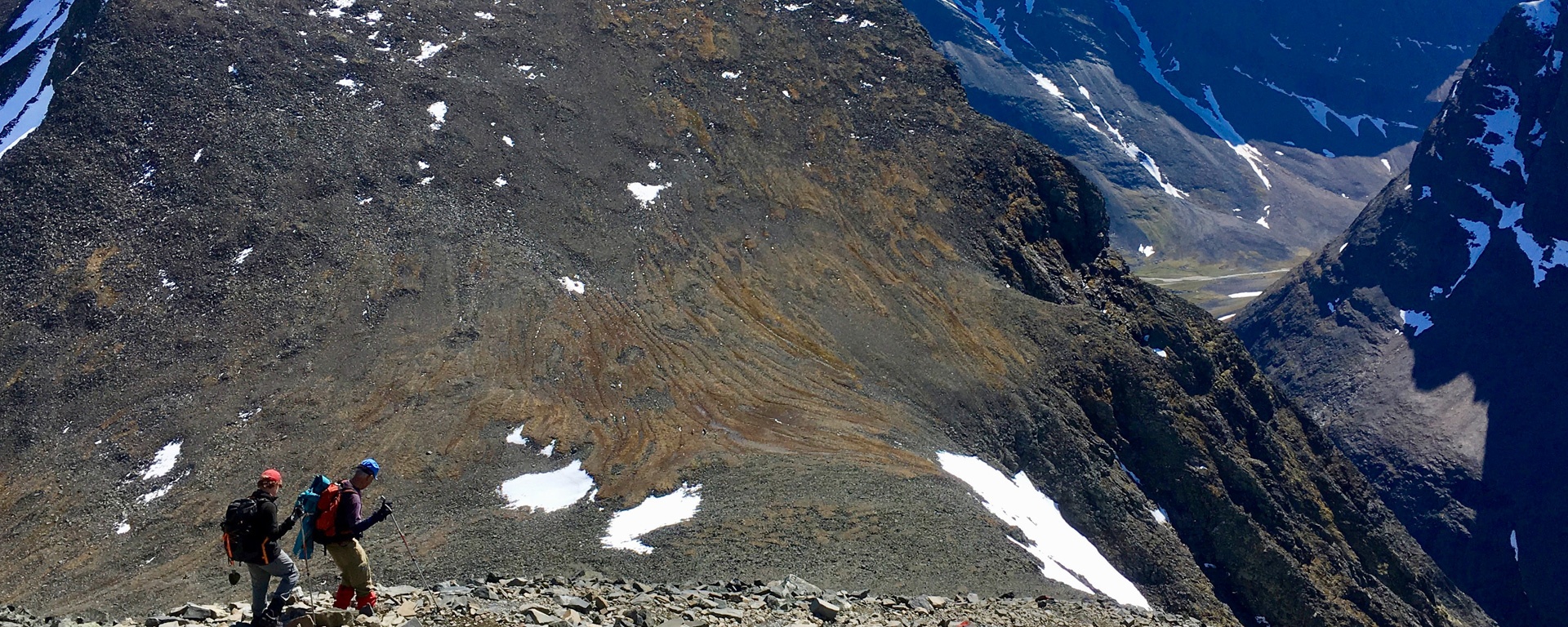
Emma on the trail in from Nikkaluokta 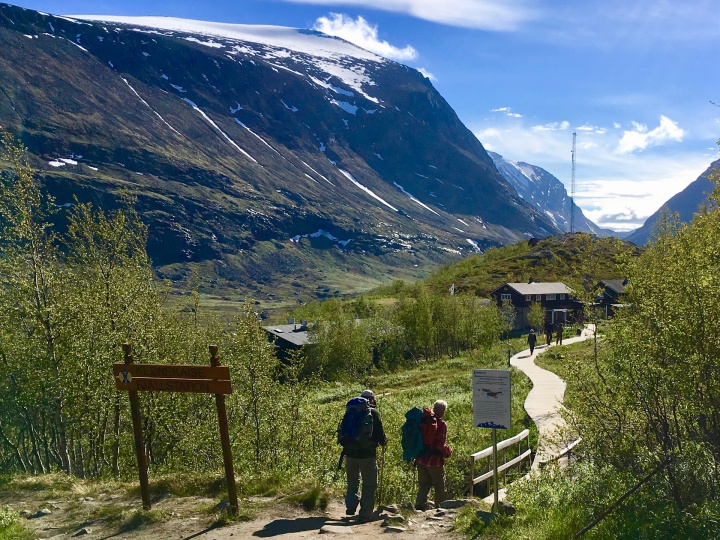
Arriving at Kebnekaise Fjällstation 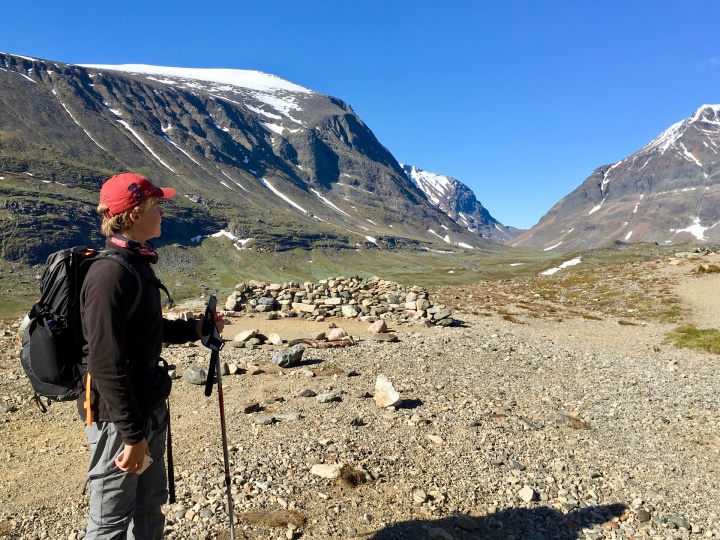
Oscar sizing up the trek ahead 
Glacial valley before heading up to Kebnekaise 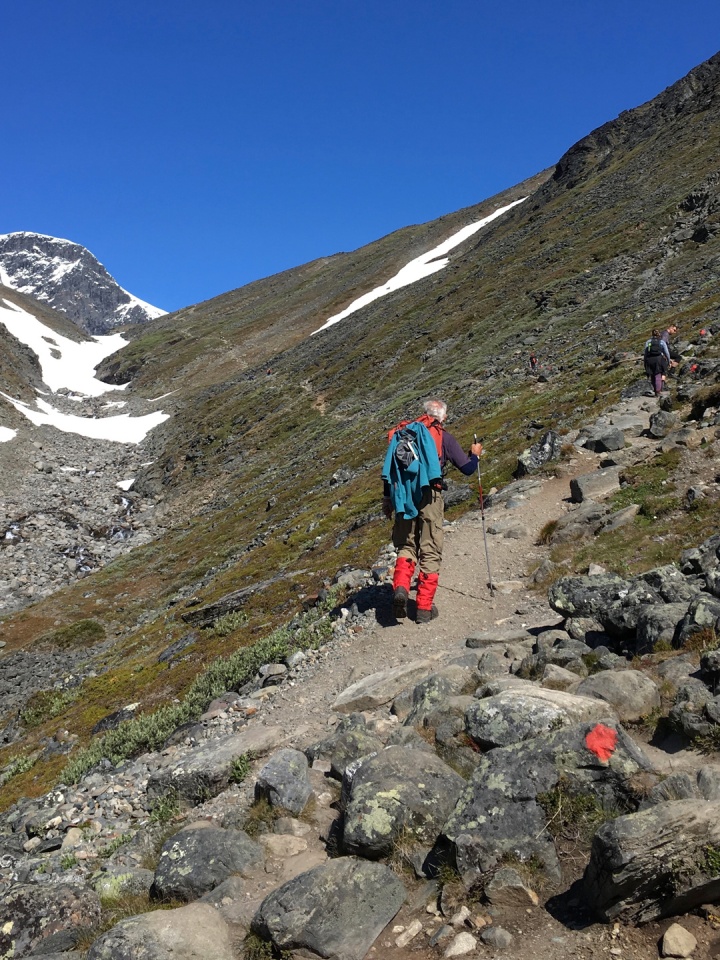
Olle, 78 years old and powering up the hills 
Oscar in the Kebnekaise basin 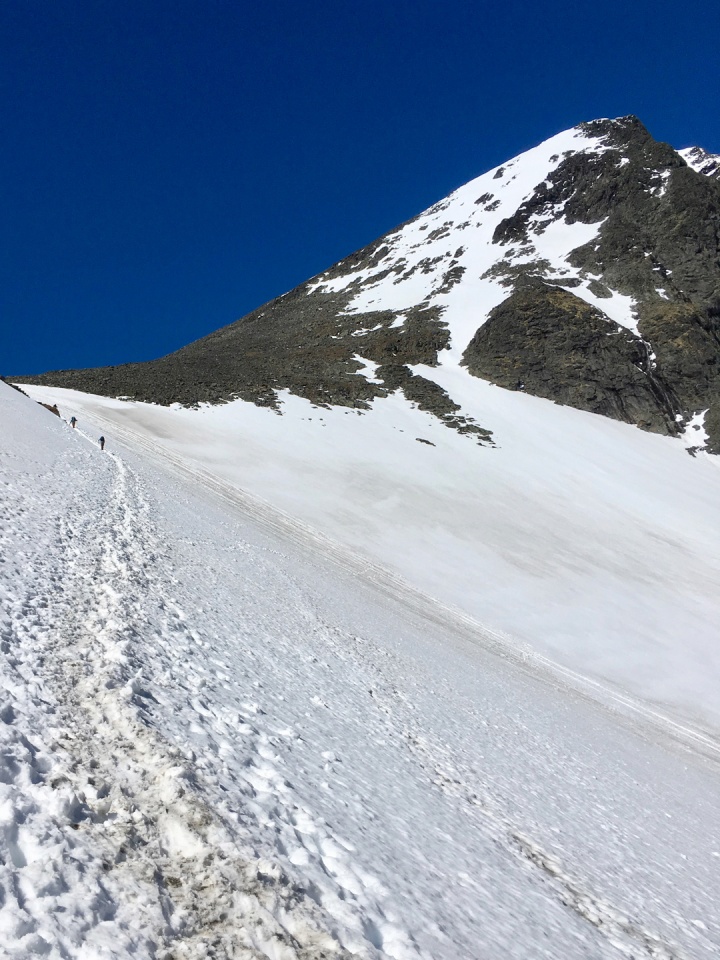
The grandfathers picking their line up to the peak 
View into the glacial valley below Kebnekaise 
Don’t slip!
I’d lived in southern Sweden as a teenager but had never travelled much further north than Stockholm. In the intervening years, my father had worked as a researcher for the Kiruna iron ore mine, the world’s largest, and used to tease us with tales of travelling to the Arctic Circle. This gnawed away at me for years until we finally got the chance to go there ourselves in the northern summer of 2018.
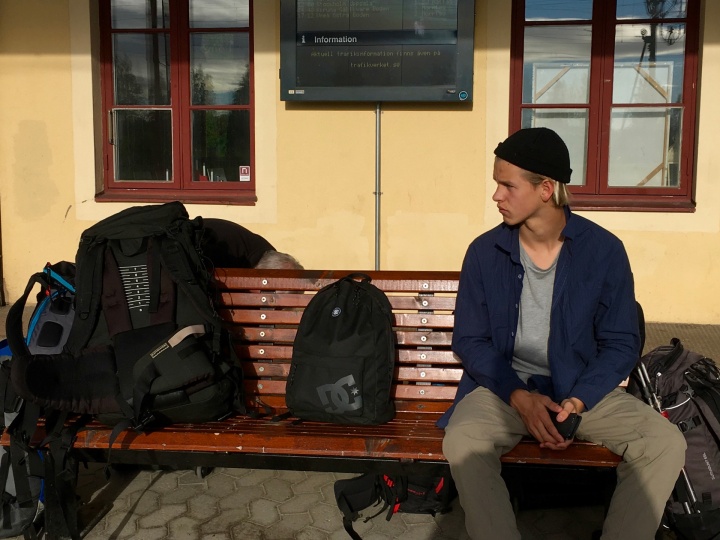
I’d originally wanted to tackle the first leg of the Kungsleden from Abisko to Kebenekaise, but with a 10 year old and wife that won’t sleep in a cabin full of snoring men in tow, we downscaled our plans to walk in from Nikkaluokta to the Kebnekaise Fjällstation. Even getting there was a mission in itself, with a flight from Sydney to Copenhagen, train to Stockholm and then the 17 hour Arctic Express train to Kiruna. This in itself was all part of the adventure as we headed closer to the Arctic Circle and midnight sun.
After overnighting in Kiruna, we jumped on the bus with other hikers out to Nikkaluokta, threw our packs on our backs and started the first trek to the edge of a large lake. From here, the lazier walkers (Us!) could fork out around AUD$50 per head to jump on a jet boat to cut 7kms off the hike. It was then a relatively easy 12km to the very well appointed Kebnekaise Fjällstation that sleeps around 200 people in cabins and provides services for others choosing to camp in the surrounding area.
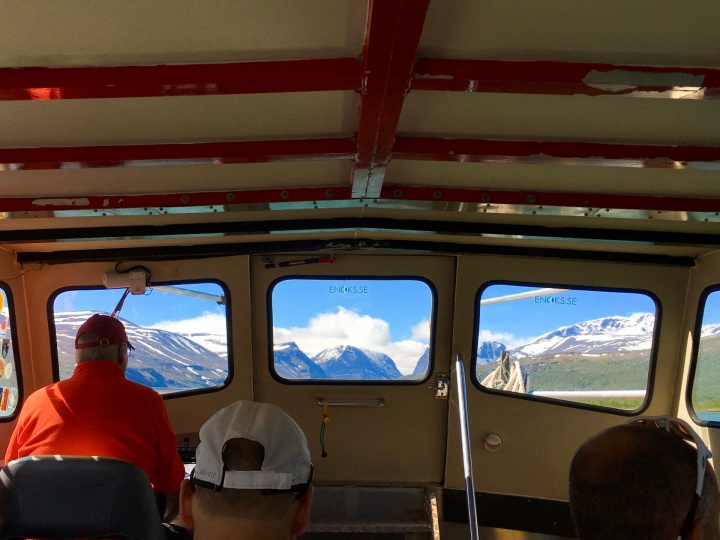
While the Fjällstation isn’t cheap to stay in, at around AUD$300 per night for a twin room, it means you can hike in with a day pack, use the communal kitchen or dine at a 4-star restaurant and have a hot sauna at the end of each day’s hiking. It’s also perfectly positioned to make for the Kebnekaise summit or do the Tarfala glacier day walks.
We’d been prepared for the weather to be terrible, but were greeted by bluebird skies and warm temperatures every day of the trip. Best of all, we’d timed the trip to be early in the walking season to avoid mosquitos and midges which can make hiking very unpleasant. We also avoided big crowds as most European summer holidays hadn’t started properly, so 90% of the walkers were Swedes.
Climbing Kebnekaise itself has a bit of a fearsome reputation amongst Swedes, mainly due to the long distance (20km+), high vertical climb (1500m) and rough glacial terrain involved. Most people set off at 4am to fit it into a day walk, but given we had two 70+ year old grandfathers and a 12 year old in our group, we figured we’d start at a sensible hour after a nice breakfast and just see how far we got at a leisurely pace!
My presumption before arriving was that the terrain would be similar to the Australian Snowy Mountains, as the actual vertical height of the peaks is around the same at just over 2000m. The shock you get once you’re actually there is that the relief from peak to valley floor is triple what you find in Australia and the Swedish peaks are have some serious terrain features.
Once we left the Fjällstation after breakfast, we had a few kilometres of rolling valley floor with the occasional reindeer grazing in the distance. The trail then turns straight uphill and follows a steep gulley next to a broiling river until you clear the vegetation line and emerge in a lunar landscape of glacial moraine. I’d originally planned to just wear light hiking trainers for the entire trip, but made the wise decision to rent some proper mountaineering boots from the Fjällstation for the summit attempt. The main factor is the unevenness of the paths, littered by scrabbly glacial rocks just waiting for you to roll an ankle on.
The view from the first basin was magnificent, with a sweeping vista of Kebnekaise peak itself surrounded by steep couloirs and cascading glaciers. As the day had now warmed up, chunks of cornice started melting and tumbling off the peak, setting off avalanches in the process and filling the basin with sporadic roars – luckily well away from the path to the summit.
From the basin, we then crossed a bridge and started up into the snow line and an even steeper climb through the moraine. This led us to a plateau below Kebnekaise peak with views down into the glacial valleys and out across the peaks to the Norwegian side of the border. By this stage it was 1pm, 12 year old Oscar was spent and the grandfathers were a good 30 minutes behind us. It was going to be at least another two hours of slogging through snow to actually reach the summit, then a 5-6 hour return trip, so we ate our lunch and turned for home rather than push on. We made it back to the Fjällstation in time for a well earned sauna and dinner in the fancy restaurant as our reward for the day’s adventure!
The main takeaway from the hike was if you do want to summit, definitely set off early and be with a group that has an evenly matched pace to get there together. The walking is hard, but not dangerous, so there’s no need to go with a guide if you’re an experienced walker and aren’t taking the glacier route. I’ve seen a lot of pictures of people summiting Kebnekaise in a whiteout, but there’s definitely no substitute for picking a weather window that will give you a view of the surrounding area. Coming back to ski tour it in spring is now high up on my bucket list!
